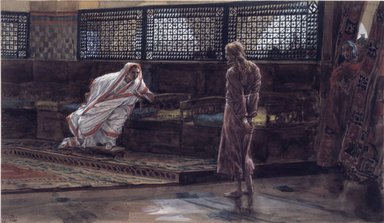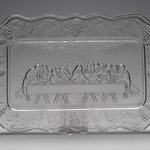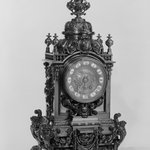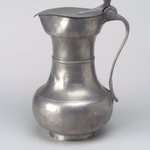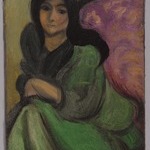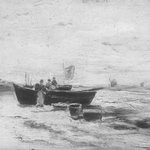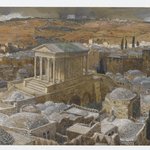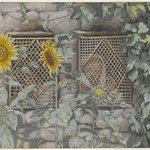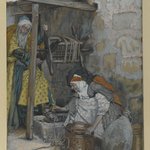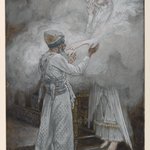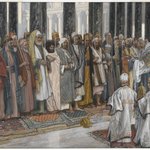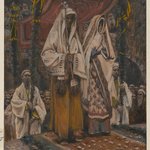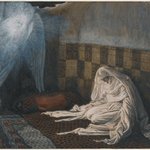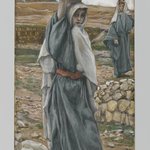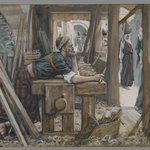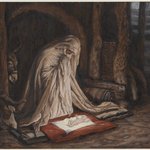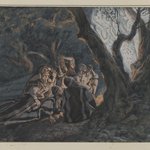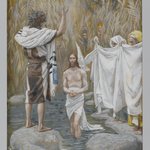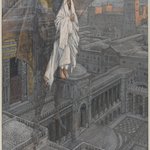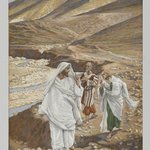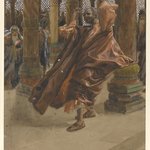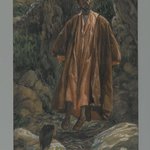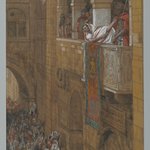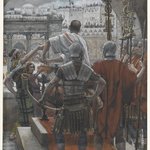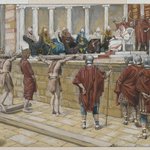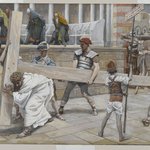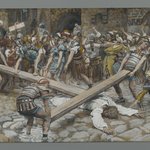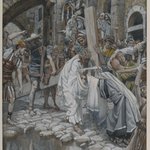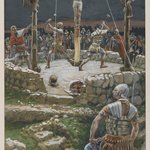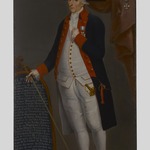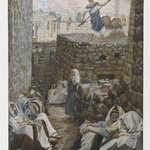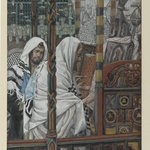Jesus Before Pilate, First Interview (Jésus devant Pilate. Premier entretien).
James Tissot
European Art
Following the accusation of blasphemy by the chief priest—a crime that demands the death sentence in ancient Jewish tradition— Jesus is brought before Pontius Pilate, the Roman governor of Judaea, at his palace. Bound and bloodied from his beatings, a seemingly frail Jesus faces Pilate, who wears the pristine toga of his rank. They meet alone in the Hall of Judgment, though several eavesdroppers appear through the screen in the background.
In the moment depicted by Tissot, Pilate asks Jesus whether he is the king of the Jews. Jesus replies that “My kingdom is not of this world” and that his purpose is to “bear witness to the truth.” At the conclusion of this interview, Pilate finds that Jesus has committed no crime and sends him to Herod.
MEDIUM
Opaque watercolor over graphite on gray wove paper
DATES
1886-1894
DIMENSIONS
Image: 6 5/8 x 11 1/4 in. (16.8 x 28.6 cm)
Sheet: 6 5/8 x 11 1/4 in. (16.8 x 28.6 cm)
Frame: 15 x 20 x 1 1/2 in. (38.1 x 50.8 x 3.8 cm)
(show scale)
SIGNATURE
Signed bottom left: "J.J. Tissot"
ACCESSION NUMBER
00.159.259
CREDIT LINE
Purchased by public subscription
PROVENANCE
1900, purchased from the artist by the Brooklyn Museum.
Provenance FAQ
MUSEUM LOCATION
This item is not on view
CAPTION
James Tissot (Nantes, France, 1836–1902, Chenecey-Buillon, France). Jesus Before Pilate, First Interview (Jésus devant Pilate. Premier entretien)., 1886-1894. Opaque watercolor over graphite on gray wove paper, Image: 6 5/8 x 11 1/4 in. (16.8 x 28.6 cm). Brooklyn Museum, Purchased by public subscription, 00.159.259 (Photo: Brooklyn Museum, 00.159.259_PS2.jpg)
IMAGE
overall, 00.159.259_PS2.jpg. Brooklyn Museum photograph, 2007
"CUR" at the beginning of an image file name means that the image was created by a curatorial staff member. These study images may be digital point-and-shoot photographs, when we don\'t yet have high-quality studio photography, or they may be scans of older negatives, slides, or photographic prints, providing historical documentation of the object.
RIGHTS STATEMENT
No known copyright restrictions
This work may be in the public domain in the United States. Works created by United States and non-United States nationals published prior to 1923 are in the public domain, subject to the terms of any applicable treaty or agreement.
You may download and use Brooklyn Museum images of this work. Please include caption information from this page and credit the Brooklyn Museum. If you need a high resolution file, please fill out our online
application form (charges apply).
The Museum does not warrant that the use of this work will not infringe on the rights of third parties, such as artists or artists' heirs holding the rights to the work. It is your responsibility to determine and satisfy copyright or other use restrictions before copying, transmitting, or making other use of protected items beyond that allowed by "fair use," as such term is understood under the United States Copyright Act.
The Brooklyn Museum makes no representations or warranties with respect to the application or terms of any international agreement governing copyright protection in the United States for works created by foreign nationals.
For further information about copyright, we recommend resources at the
United States Library of Congress,
Cornell University,
Copyright and Cultural Institutions: Guidelines for U.S. Libraries, Archives, and Museums, and
Copyright Watch.
For more information about the Museum's rights project, including how rights types are assigned, please see our
blog posts on copyright.
If you have any information regarding this work and rights to it, please contact
copyright@brooklynmuseum.org.
RECORD COMPLETENESS
Not every record you will find here is complete. More information is available for some works than for others, and some entries have been updated more recently. Records are frequently reviewed and revised, and
we welcome any additional information you might have.


